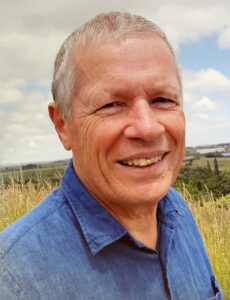Analysis by Keith Rankin.

This morning, on Morning Report (RNZ) Monash University epidemiologist Tony Blakely noted that Covid19 death rates in New Zealand are 20% higher in New Zealand than in Victoria, Australia. He also noted that facemask use is significantly more widespread in New Zealand.
When comparing New Zealand with the whole of Australia, the situation is worse. Based on data published by Worldometer, New Zealand was running at 50% more deaths than Australia in the beginning of July. Yesterday New Zealand was showing double. In today’s update, New Zealand’s weekly deaths per million people are shown as 30, literally worst in the world, now ahead of Malta, San Marino and Taiwan. Australia is showing as 14 weekly deaths per million in the last seven days.
Tony Blakely speculates that New Zealand’s higher death rates may be due to socioeconomic reasons, with Māori and Pacific ethnicities as indicators of disadvantage and of health comorbidity. The recent data – easily available to any researcher who keeps daily snapshots of Ministry of Health data – suggests otherwise. The real story in New Zealand is about the large numbers of unprotected elderly; that’s most likely why New Zealand’s published deaths are now the worst in the world.
The Ministry of Health does not publicise current data on Covid19; most of its statistics are of cumulative data, covering the whole of the pandemic without showing recent trends. But check out the following that covers the previous four days.
- 73 of 87 who died with covid are Pakeha (84%)
- 73 of 87 who died with covid have had 3 vaccine shots (84%)
- 64 of 87 who died with covid are aged over 80 (74%)
- 28 of 31 who died because of covid are Pakeha (90%)
- 28 of 31 who died because of covid are aged over 80 (90%)
- 26 of 31 who died because of covid are aged over 80 and Pakeha (84%)
Note that the ‘because of covid’ data is less up-to-date, and was not updated today; so it only covers two days worth of data, and it takes a while to verify Covid19 as the principal cause of death.
Re active cases, in today’s update we get the following:
- 13.3% of active cases are Māori/Pacific
- 14.5% of active cases are under 20 years old
- 61.2% of active cases are aged 20-59
- just 4.2% of active cases are aged over 80
Re ethnicity, we should note that prioritisation-rules mean that anyone with any Māori of Pacific ancestry is categorised as Māori or Pacific. So, given mixed ethnicities being common, this data effectively understates Pakeha rates, and overstates Māori/Pacific. The data above indicate that recent Covid19 is substantially a Pakeha problem. And not a problem of school children.
We are seeing the vast majority of recent deaths due to Covid as being to elderly Pakeha. Yet this demographic represents just four percent of active cases. (I would regard ‘elderly’ as ‘all over 80’, and older as ‘all over 60’.)
And we see that a substantial majority of deaths are people who have had three Covid19 vaccination shots. This latter point is not an argument against vaccination. It is a recognition that there is a significant group of older people with unusually depleted immunity to respiratory infections; infections that include Covid19. These are people who avoided getting Covid19 until recently, and who had their third shot just under six months before catching Covid19. Current government policy completely neglects these people.
And the analyses by Tony Blakely and Michael Baker also largely ignore them. The article in The Conversation by these two has only this to say: “Second booster (that is, the fourth dose) available to all 50+ year olds (but targeted more to 65+ year olds, unless Māori or Pasifika, in which case all 50+ year olds prioritised). Free.” That is simply not true. It’s only available today to these people if they had their previous booster on or before 18 January 2022. Most people had their first booster after that date.
The deaths from this neglect of the elderly accumulate as I write.
*******
Keith Rankin (keith at rankin dot nz), trained as an economic historian, is a retired lecturer in Economics and Statistics. He lives in Auckland, New Zealand.








